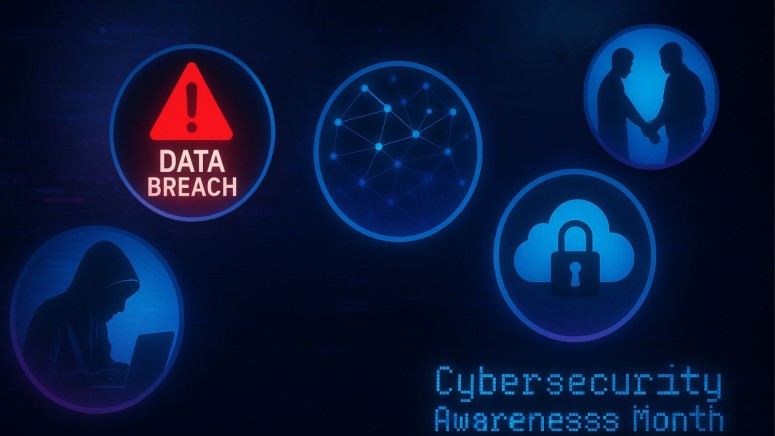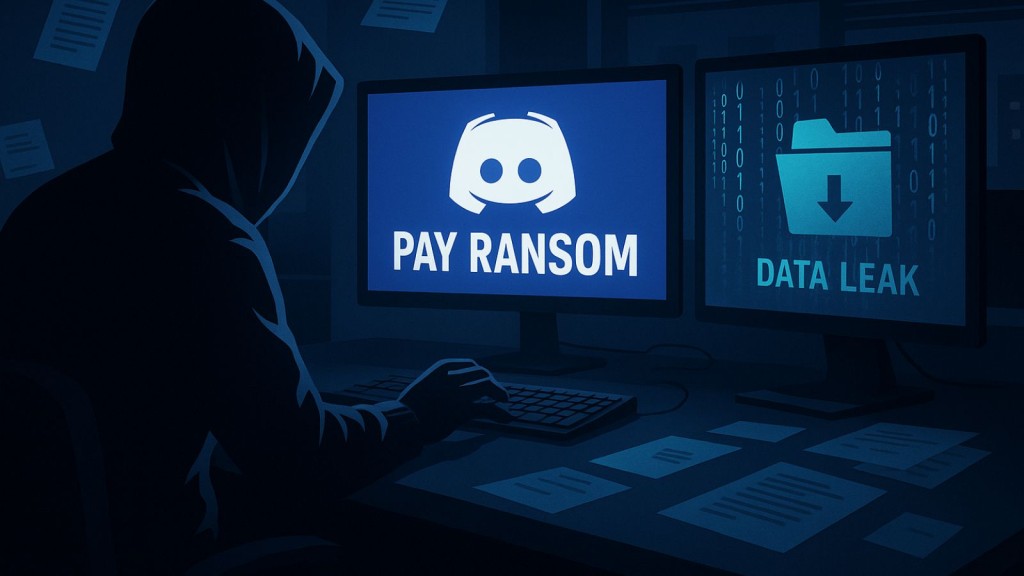
Security Gaps, Law Enforcement Wins, and AI Challenges Dominate the Weekly Cyber News
This week’s major stories arrive in the middle of Cybersecurity Awareness Month, a reminder that awareness alone isn’t enough. Industry leaders are urging a shift from routine reminders to real operational resilience.
Gary Brickhouse, SVP and CISO at GuidePoint Security, notes that awareness means little without the ability to anticipate, withstand, and recover from attacks. With AI now scaling threats faster than defenders can respond, this week’s headlines, from ransomware arrests to cloud security lapses, illustrate the widening gap between innovation and defense.
Cloud And AI Security Report Reveals Critical Gaps as Cloud Growth Outpaces Protection Readiness
A global report highlights a widening security divide as enterprises adopt AI and cloud services faster than they can protect them. Organizations face unmonitored workloads, identity mismanagement, and misconfigurations that enable lateral movement. Analysts warn that without synchronized security frameworks, the growing dependency on AI-driven infrastructure will deepen exposure across multiple cloud environments and increase the frequency of unauthorized access attempts.
NSW Contractor Causes Data Breach by Uploading 3,000 Flood Victims’ Information to ChatGPT
An Australian government contractor triggered a significant privacy breach by uploading thousands of flood victims’ personal details into ChatGPT. The data, meant for recovery coordination, entered the AI’s training input, violating confidentiality rules. The state’s Information Commissioner launched an investigation into AI misuse and data handling failures, emphasizing the urgent need for clearer governance in public-sector use of generative AI.
Western Sydney University Breached, Students Get Fake Emails After Data Exposure
Western Sydney University disclosed a data breach exposing student details that attackers exploited to launch phishing campaigns. Compromised credentials allowed fake messages impersonating staff to circulate, luring victims to malicious portals. The university began direct outreach to affected students and implemented stricter authentication protocols. Authorities say the incident reflects a broader rise in higher-education targeting through credential theft and impersonation tactics.
Dark Web Plot Foiled, Kido Ransomware Suspects Arrested by Authorities
Authorities arrested two individuals linked to the Kido ransomware group after uncovering a dark web extortion scheme involving stolen data. The group had planned coordinated attacks targeting educational and municipal networks. Digital forensics experts found encrypted data caches and cryptocurrency payment evidence on seized devices. The operation marks a major win in disrupting ransomware logistics and tracing cross-border threat coordination.
AI Powers Defense, But Skills Gap Keeps Security on Edge
AI-driven defense systems are improving threat detection, but the global cybersecurity workforce remains dangerously understaffed. Many teams lack personnel capable of tuning AI tools, leaving false positives unchecked and real threats unnoticed. Organizations are increasing training budgets, yet recruitment struggles persist. Analysts warn that automation without human expertise may widen operational risk rather than close detection and response gaps.
Too Fast, Too Vulnerable: DevSecOps Teams Struggle to Keep Code Secure
Rapid software release cycles are creating blind spots in security testing. DevSecOps teams admit that many vulnerabilities slip through due to tight delivery schedules. Incomplete dependency scanning and unreviewed integrations amplify the problem. Experts recommend continuous testing pipelines and mandatory pre-deployment checks to curb exposure. The findings illustrate how speed-driven development continues to compromise secure coding standards in large-scale projects.
AI Progress Hits Pause as Security Gaps Force Firms to Rethink Adoption
Companies are delaying or halting AI projects after uncovering governance flaws and data protection weaknesses in production models. Analysts cite unsecured API endpoints, unvetted datasets, and model drift risks as key blockers. Executives now demand clear accountability for model integrity before resuming rollouts. This growing caution marks a turning point in corporate AI maturity and prioritizes risk management over rapid scaling.
API Security Lags as AI Adoption Accelerates, Report Finds
A new report shows that APIs remain the weakest link in AI infrastructure, leaving sensitive data exposed to misuse. Organizations lack unified API visibility and struggle with outdated authentication mechanisms. Security experts stress implementing behavioral monitoring and access segmentation. Without better API governance, the next wave of AI breaches may stem not from model compromise, but from data flow exploitation.
ClayRat Spyware Campaign Targets Android Users via Telegram and Fake App Stores
ClayRat spyware operators are distributing malware through Telegram channels and counterfeit app sites mimicking popular platforms like TikTok and YouTube. Once installed, it exfiltrates device information, call logs, and messaging content. Researchers attribute the campaign to a long-running espionage cluster using evolving delivery infrastructure. Android users are urged to avoid sideloading apps and verify authenticity through official app repositories.
Discord Breach Escalates With Extortion and Data Leaks
Discord faces an extortion campaign after 1.5 TB of sensitive user data was stolen from 5CA, a third-party customer service vendor. The dataset includes over 2 million age verification photos and other personal details. Zendesk, initially mentioned in reports, told TechNadu that its platform was not affected, confirming, “Zendesk’s own systems were not compromised.” Discord says it is notifying affected users and reviewing vendor security practices.
Over 100 Organizations Affected in Oracle Hacking Campaign by Cl0p Ransomware
The Cl0p ransomware group compromised Oracle environments used by more than 100 organizations worldwide. Attackers exploited software vulnerabilities to steal data and encrypt critical systems, impacting financial, healthcare, and manufacturing sectors. Analysts identified evidence of automation in Cl0p’s new campaign, signaling a shift toward faster, scalable attacks. The breach reinforces the urgent need for proactive patching and vendor visibility.
FBI Seizes BreachForums as ShinyHunters Retaliate With Salesforce Extortion Threats
Law enforcement dismantled BreachForums, a well-known marketplace for stolen data, and arrested its administrators. Shortly after, ShinyHunters threatened Salesforce with extortion, claiming possession of internal data. The retaliation underscores how cybercrime groups adapt rapidly after takedowns. Investigators warn that shutting down one marketplace often triggers multiple clones, emphasizing the need for sustained international collaboration and intelligence sharing.
What the Week Reveals
As efforts around Cybersecurity Awareness Month continue, experts across the industry echo a message: awareness must evolve into resilience. Bob Maley, CSO at Black Kite, says awareness should move beyond posters and checklists to create individuals who act as first responders.
Eran Barak, CEO of MIND, stresses that organizations can’t protect what they can’t see, urging full visibility into unstructured data. Matt Mullins, Head Hacker and Offensive SME at Reveal Security, emphasizes that identity - human or machine, is now the true front line.
Bert Kashyap, CEO of SecureW2, advocates for continuous validation systems that reflect real-time trust, not scheduled checks. Together, their insights highlight the next phase of maturity: building cyber resilience through visibility, adaptability, and integration of security into every business process.





















